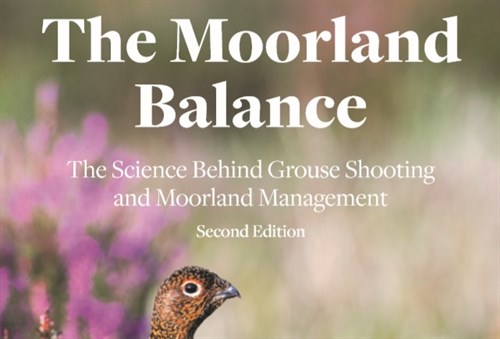In 2018 and again this year, very little grouse shooting took place in Scotland. Gamekeepers and land managers surveyed their local populations using well established counting techniques in advance of the shooting seasons. Other than in a very few locations, they decided that there was an insufficient number of red grouse to take a shootable harvest and leave a healthy breeding stock for future years.
This is a well-established and self-imposed process, relying on an evidence-based approach to sensibly manage natural assets.
The concern for conservation through wise use applied by gamekeepers and land managers flies completely in the face of the assertion made by the ‘Ecologist’ article that grouse management is both intensive and indiscriminate. This sense of responsibility extends equally to mountain hare conservation.
Mountain Hare numbers
Mountain Hares are well known to go through similar cycles to that of red grouse, with declines compensated for by rapid recoveries, such that some local populations can vary by a factor of 10 or more over a 7 to 15-year time period.
Gamekeepers have, for generations, observed and recorded hares at the same time as grouse monitoring is undertaken. When hare numbers appear to be low, less management is undertaken. When their numbers are very high, then hare numbers may be managed.
Moorland management has been shown to be beneficial to the mountain hares. Some of the highest densities of mountain hares in Europe occur on the driven grouse moors of north-east Scotland, where hares benefit from habitat management and predator control.
Mountain hares eat heather and other moorland plants, so the managed burning carried out by gamekeepers to ensure a supply of young heather shoots for grouse can improve the food supply for mountain hares. As foxes can account for up to 90% of mountain hare mortality, the predator control carried out on grouse moors may also help mountain hare survival.
The ‘Ecologist’ article fails to mention the research published earlier this year which observed that on managed grouse moors, mountain hare populations were up to 35 times higher than on unmanaged moors.
The article also claims that there is indiscriminate killing of mountain hares. In evidence, it points to the recent change in recommendation on conservation status to ‘unfavourable’, claiming that the proposed change in status is ‘primarily because of hunting and game management’. This is untrue. The assessment regarding the impact of hunting on species conservation is a recent additional requirement to Annex V reporting under the EU Habitats Directive.
The report prepared by the Statutory Nature Conservation Bodies on behalf of UK government and Devolved Administrations effectively identifies hunting as an unquantified impact on hare numbers. In fact, the recommendation is ‘unfavourable inadequate’. The report’s inclusion of ‘inadequate’ is important because this recognises that there is a paucity of sound information about hare numbers and management.
We now know from commissioned research report 1022 delivered to Scottish Natural Heritage in early 2018 that daytime counting of Mountain Hares is unreliable, recording only a fraction of the numbers found on night-time counts in the same areas.
The speed with which grouse moor keepers across Scotland have taken up the approved night-time counting methodology reflects how important it is to them to ensure that any management of hares they undertake is based on the best available evidence. This professional response is again poles apart from the assertion in the ‘Ecologist’ article about indiscriminate action.
Inaccuracies and selective commentary
We could continue to dissect other claims made in the ‘Ecologist’ article as we have plenty to comment on in each and every instance, but that could take a long time. Suffice to say that the inaccuracies and selective commentary on mountain hares in the article serves no discernible interest in a publication called ‘Ecologist’.
We have offered to submit an article in response to the piece written by One Kind, but we were told by the editor this would not be printed.

The Moorland Balance - eBook - only £4.99
Get the science behind grouse shooting and moorland management. Building on the success of the first edition, this new and improved version condenses thousands of pages of scientific literature into easy-to-read questions and answers. Over 200 different studies from across the scientific community are referenced in this 134-page book.
View Book >
or
Buy Now - £4.99 >
100% Secure. All Credit & Debit cards, PayPal, Apple Pay and Google Pay accepted.
